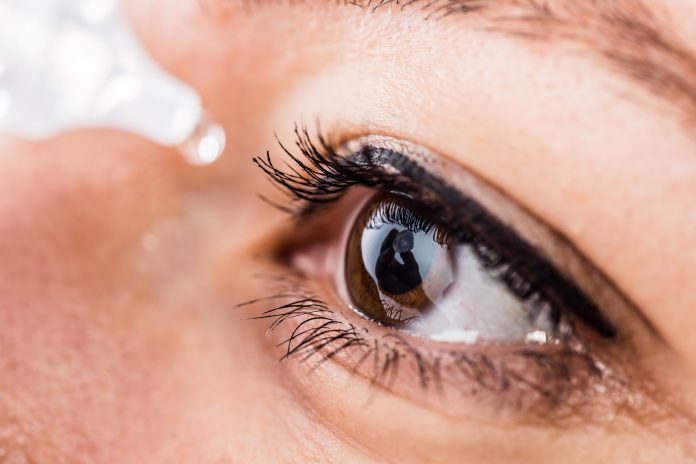Basal tears are tears that are released by both eyes in a tiny, continuous flow intended to keep the cornea lubricated while also fighting against bacterial infection as a part of the body’s immune system.
When basal tears are produced as intended, we’re blissfully unaware of our eyes and suffer no eye discomfort.
Unfortunately, multiple factors can interfere with the eye’s tear function, leading to a range of conditions including keratoconjunctivitis sicca, more commonly known as dry eye disease (DED).
Patients suffering with DED complain of a wide range of symptoms from mild discomfort to significant pain and, if left untreated, severe DED can progress lead to inflammation of the eye, abrasion of the cornea, corneal ulceration, and long-term vision problems.
Oil on troubled water
To understand the aetiology, signs, and symptoms of DED, Retail Pharmacy spoke with some ophthalmic specialists, and explored the treatment options community pharmacies can offer.

Optometrist and Alcon ANZ Professional Affairs Associate Megan Zabell specialises in the education and training of optometrists, dispensers, pharmacists and pharmacy assistants, on a range of eye conditions and treatments.
She says the main causes for DED are tear quantity, tear quality, or a combination of the two.
“Sometimes the eyes aren’t producing enough tears, and this can be related to age and some inflammatory conditions,” she says.
“Other times, the eyes produce poor quality tears, so they evaporate off the eye’s surface too quickly, a condition most commonly linked to poor function of the oil glands. Dry eye can also be caused by a combination of the two.”
Ebb and flow
Vision Eye Institute Ophthalmologist and University of Canberra Associate Professor Colin Chan says it’s important to ask questions and learn a patient’s history to determine that a patient is presenting with DED and not some other more acute eye problem.
“Dry eye disease is typically a more chronic problem,” he says.
“It will be exacerbated by certain activities, like working at a computer or anything which reduces blinking, because that increases evaporation from the eyes.
“Things like air conditioning, central heating, or even the wind outside can trigger DED and patients will usually talk about something relatively chronic and affecting them most of the time.
“Knowing there are different kinds of symptoms is important because watery eyes and dry eyes can both be symptoms of DED.
“One of the most common symptoms of dry eye is the patient complaining of reflex watering when they’re out in the wind or saying their eyes suddenly start watering when they’re working at a computer.”

Ms Zabell says a frustrating aspect of DED is that sufferers may experience one, two, all, or even none of the typical symptoms, while the severity of symptoms felt by the patient and the signs observed by the healthcare professional often don’t match.
This means when those involved in pharmacy are discussing dry eye complaints with patients, it’s important to gain an understanding of the patient’s history before considering the possibility of DED, particularly as there are some people at higher risk of suffering DED than others.
Ms Zabell says if a customer is in a high-risk group for suffering from dry eye, you can ask three simple questions to “try and tease out any complaints”:
- Do your eyes feel healthy?
- This can be a prompt for any of the symptoms mentioned. Sometimes patients can’t articulate the symptoms but know that something feels a bit off about their eyes.
- Do you think your eyes look healthy?
- If a patient has chronic dry eye, the nerves on the front of the eye are changed, so they may stop complaining of symptoms but lament that their eyes look red (or that loved ones often say their eyes look red).
- Do your eyes ever feel dry or uncomfortable?
When presented with a patient suffering with DED, plenty of OTC products are available in community pharmacies.
While these don’t address the pathophysiology of DED, they can offer effective temporary relief and are used by many patients to successfully control their condition.
In recommending the best product for each patient’s needs, consideration should be given to the type of DED (evaporative, aqueous or mixed), the severity of the patient’s symptoms, and if the patient wears contact lenses, as some products are not compatible with lenses.
Taming tear troubles
When discussing DED with patients, Ms Zabell recommends passing on the following lifestyle tips to help them manage their symptoms and reduce the need for eye drops.
- Stay sufficiently hydrated by drinking plenty of water. This makes a significant difference and is something often forgotten.
- Use the 20/20/20 rule to take breaks from screen work. For every 20 minutes of screen work, take a 20 second break to look at something 20 feet (6 metres) or more away. This relaxes your eyes and improves blinking.
- Eating a healthy, balanced diet.
- If they are a smoker, discuss that smoking cessation can help reduce DED symptoms.
- Wearing sunglasses that protect the eyes when outside can help with some symptoms.
To read the full feature as it appears in the September issue of Retail Pharmacy magazine, visit: retailpharmacymagazine.com.au/magazine








